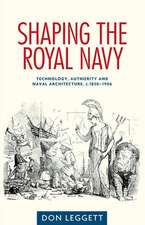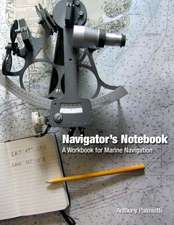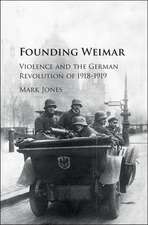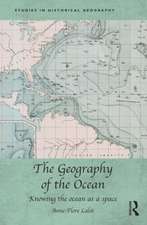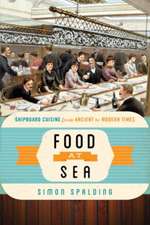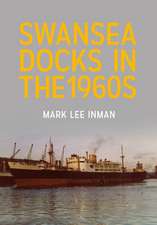Heritage Microbiology and Science: Microbes, Monuments and Maritime Materials: Special Publications, cartea 315
Editat de Eric May, Mark Jones, Julian Mitchellen Limba Engleză Hardback – 31 aug 2008
Heritage Science is emerging as a discipline that brings together chemists, physicists, microbiologists, conservation scientists, archaeologists and conservators. Its scope, precise boundaries and the interfaces between its component disciplines may be in a state of flux but, above all, its interdisciplinary nature offers understanding of the causes, control and protection of heritage from ever-present environmental challenges. In particular, the activities of microbes play a central part in shaping the natural world of our planet but this awesome power constitutes a serious threat to the integrity of our most precious art, heritage artefacts, monuments and cultural treasures. Heritage artefacts that have been recovered from water, or that exist near the sea in maritime conditions, pose special conservation problems due in main to the combined effect of microbial activities and physical/chemical assaults that the environment can offer. This book is a result of the invited and updated papers from HMS2005: Microbes, Monuments and Maritime Materials and forms a comprehensive volume that addresses key topical areas of heritage science and discusses the threats to a wide range of heritage materials and monuments by biological and chemical agents of decay. Key features of the book include: " Up-to-date summaries on the conservation of internationally-important artefacts and monuments " Clear outline of molecular techniques to identify microbes in environmental heritage samples " Wide range of case studies covering wood, stone, cave and cave paintings " Contributions presented as fully referenced research publications giving useful technical details and identification of areas for future study " Informs conservators about the threats from microbes to a range of materials " Extensive range of case studies of important world heritage artefacts and monuments as well as an overview of in situ preservation of historic ships " Provides background knowledge on the use and application of modern analytical techniques in conservation " Contains detailed information on molecular and synchrotron techniques to assist with identifying biological and chemical threats to heritage artefacts and monuments The book also provides up-to-date information on subjects covering the component field of heritage microbiology, molecular and chemical analytical techniques, and the mechanisms of degradation and deterioration of historic ships and buildings. The book details state-of-the-art techniques for the study of large and small heritage objects, and their conservation. Techniques cover the use of GIS image processing, molecular biological analysis of environmental samples including FISH, electrophoresis to remove corrosive ions and synchrotron radiation to detect chemicals present in artefacts. Several authors have developed their methods through involvement in international collaborative projects such as BIOBRUSH, BACPOLES and Save the Vasa. Extensive emphasis is placed on case studies and there is a valuable section on historic ships covering the preservation of HMS Victory, ss Great Britain, Vasa and the Mary Rose. This book provides an indispensable guide and reference source for those working in all areas of historical conservation, biodeterioration, microbiology and materials science.
Din seria Special Publications
- 8%
 Preț: 575.52 lei
Preț: 575.52 lei - 14%
 Preț: 965.01 lei
Preț: 965.01 lei - 23%
 Preț: 1055.72 lei
Preț: 1055.72 lei -
 Preț: 164.94 lei
Preț: 164.94 lei - 14%
 Preț: 1062.13 lei
Preț: 1062.13 lei - 14%
 Preț: 772.72 lei
Preț: 772.72 lei - 14%
 Preț: 775.90 lei
Preț: 775.90 lei - 14%
 Preț: 968.30 lei
Preț: 968.30 lei - 5%
 Preț: 1076.96 lei
Preț: 1076.96 lei -
 Preț: 226.63 lei
Preț: 226.63 lei - 14%
 Preț: 775.38 lei
Preț: 775.38 lei -
 Preț: 155.94 lei
Preț: 155.94 lei -
 Preț: 211.95 lei
Preț: 211.95 lei - 8%
 Preț: 656.80 lei
Preț: 656.80 lei - 5%
 Preț: 1075.12 lei
Preț: 1075.12 lei - 9%
 Preț: 1010.60 lei
Preț: 1010.60 lei - 9%
 Preț: 1191.80 lei
Preț: 1191.80 lei - 14%
 Preț: 780.35 lei
Preț: 780.35 lei - 11%
 Preț: 583.29 lei
Preț: 583.29 lei - 11%
 Preț: 648.03 lei
Preț: 648.03 lei - 14%
 Preț: 786.15 lei
Preț: 786.15 lei - 14%
 Preț: 942.81 lei
Preț: 942.81 lei - 14%
 Preț: 960.02 lei
Preț: 960.02 lei - 14%
 Preț: 782.83 lei
Preț: 782.83 lei - 14%
 Preț: 780.35 lei
Preț: 780.35 lei - 14%
 Preț: 782.31 lei
Preț: 782.31 lei - 14%
 Preț: 773.13 lei
Preț: 773.13 lei - 14%
 Preț: 778.02 lei
Preț: 778.02 lei - 14%
 Preț: 784.15 lei
Preț: 784.15 lei - 14%
 Preț: 775.53 lei
Preț: 775.53 lei - 30%
 Preț: 447.14 lei
Preț: 447.14 lei - 29%
 Preț: 540.08 lei
Preț: 540.08 lei - 31%
 Preț: 314.75 lei
Preț: 314.75 lei - 31%
 Preț: 317.49 lei
Preț: 317.49 lei - 13%
 Preț: 404.91 lei
Preț: 404.91 lei - 32%
 Preț: 646.43 lei
Preț: 646.43 lei - 33%
 Preț: 790.65 lei
Preț: 790.65 lei - 32%
 Preț: 709.56 lei
Preț: 709.56 lei - 23%
 Preț: 877.50 lei
Preț: 877.50 lei - 9%
 Preț: 832.62 lei
Preț: 832.62 lei - 9%
 Preț: 866.39 lei
Preț: 866.39 lei - 9%
 Preț: 868.56 lei
Preț: 868.56 lei
Preț: 859.18 lei
Preț vechi: 999.05 lei
-14% Nou
Puncte Express: 1289
Preț estimativ în valută:
164.46€ • 178.70$ • 138.23£
164.46€ • 178.70$ • 138.23£
Carte tipărită la comandă
Livrare economică 22 aprilie-06 mai
Preluare comenzi: 021 569.72.76
Specificații
ISBN-13: 9780854041411
ISBN-10: 0854041419
Pagini: 305
Ilustrații: 1
Dimensiuni: 155 x 234 x 23 mm
Greutate: 0.66 kg
Editura: Royal Society Of Chemistry
Seriile Special Publication, Special Publications
ISBN-10: 0854041419
Pagini: 305
Ilustrații: 1
Dimensiuni: 155 x 234 x 23 mm
Greutate: 0.66 kg
Editura: Royal Society Of Chemistry
Seriile Special Publication, Special Publications
Cuprins
Introduction: Heritage Microbiology, Science And the Mary Rose: What are we trying to achieve? Introduction; Background; Conference Themes and the Mary Rose; What are we trying to achieve? Conclusion; Part 1: Heritage Monuments and Materials; Heritage Research and Practice: Towards a better understanding? Introduction; Evaluation of Biodeterioration Processes; Biodeterioration Mechanisms; Exogenic Parameters; Biofilm - A Stabilising Microniche; Environmental Conditions for Biodeterioration Processes; Microbiological Assessment of Biodeterioration Impacts; Microbiology and Archaeology - Case Studies; Terracotta Army in Xian / China (Polychrome Coatings); Nydam Mose / Denmark (Metals); Temple of Angkor Wat, Cambodia (Natural Stone); Archaeological Site of Milet in Turkey (Waterlogged Marble); Prospective Needs for an Interdisciplinary Approach in Conservation Microbiology; Mapping Decay: GIS, Microbes and Stone Degradation across Scales; Introduction; Geographical Information Systems; Use of Images for Classifying Degradation; Illustrations of Mapping Degradation in a GIS; Conclusions; Microbial Colonisation of Historic Buildings in Latin America; Introduction; Methods; Sites and Sampling; Detection and Identification; Results and Discussion Analysis of Bacterial Communities on an Antique Stained Glass Window; Introduction; Methods and Results; Deterioration on the window "Natività"; Sampling, Growth Conditions and Phenotypical Characterization; Molecular Characterization; Conclusions; Assessing the Suitability of Novel Biocides for use on Historic Surfaces; Introduction; Methods and Results; Compatibility of Novel Treatments with Conservation Products; Tests on Sandstone; Accelerated Weathering; Tests on Traditional Painted Plaster; Field Studies; Test Surfaces; Test Rigs; Treatments; Effectiveness Measurements; Fluorescence and Colour Measurements after Treatment Application; Post-Treatment Assessment; The Occurrence of Heterotrophic Microorganisms on Heritage Surfaces; Discussion; Conclusion; Biocalcification: The Context for Bioremediation; Introduction; Biomineralization; Calcium Carbonate Biomineralization; Monumental Stone Decay and Conservation; Bioremediation for Conservation; Methods and Results; On-site Application; Bio-inducing Macromolecules Solutions (BIMSs); Methodology of Application; BMT Evaluation; On-site results; Conclusions; The Biobrush Project for Bioremediation of Heritage Stone; A Need for Stone Conservation; Rationale for Biobrush Research; Collection and Analysis of Encrusted Stone from Historic Buildings; Selection and Screening of Bacterial Cultures for use in Bioremediation; Evaluation of Delivery Systems to carry Biological Agents onto the Stone; Mineral Changes in Stones during Bioremediation Treatment; Field Trials of Bioremediation on Buildings and Monuments; Recommended Methodologies; Implications of Biobrush Research; Part 2: Molecular Methods for Heritage Artefacts and Monuments; Molecular Studies for Cultural Heritage: State of the Art; Introduction; Previous Methods for the Detection of Microorganisms; Culture-Independent Methods to Detect Microorganisms; Recent Advancements for Detecting Microorganisms; MDA-PCR Amplifications; DNA Library Screening; Detection and Analysis of Chimeras; Analysis Based on DNA and RNA; Further Perspectives; Bacteria in Archaeological and Waterlogged Wood: Molecular Protocols for Diversity and Community Studies; Introduction; Waterlogged Wood and its Microbiology; Extraction of Nucleic Acids from Wood; Overcoming Low Quantities of Impure Nucleic Acids; PCR and the Separation of Mixed-Origin PCR Products; Fluorescent In Situ Hybridisation and Waterlogged Wood; Conclusions; Synchrotron Radiation for the Investigation of Objects of Cultural Heritage Value; Introduction; Synchrotron Radiation; Examples of Synchrotron Science as Applied to Heritage Materials; Archaeological Iron; Erosion of Carbonate Building Materials; Textile Fibres from the Qumran Caves; Corinthian Style Helmet from Ancient Greece; Conclusions; Summary; Fluorescent In Situ Hybridization (FISH) as Molecular Tool to Study Bacteria causing Biodeterioration; Introduction; FISH Applied to the Study of Biodeterioration of Works of Art; Limits and Advantages of FISH to Study Microbial Communities associated with Biodeterioration; Methods that Enhance the Signal; Identification of Bacteria from Waterlogged Archaeological Wood; Introduction; Method and Results; Sampling; Cultivation; DNA-Based Identification; DNA Extraction; PCR Amplification and Construction of 16S rDNA Clone Libraries and T-RFLP Community Fingerprinting; Sequencing of 16S rDNA Inserts and Phylogenetic Analysis; Conclusions; Summary; Novel Combined Approach Based on Phospholipid Fatty Acids and 16S-rDNA PCR-SSCP Analyses to Characterise Fouling Biofilms on Historic Monuments; Introduction; Culture-Independent Approaches to Characterise Microbial Communities; Materials and Methods; Siiiite DDDescription; Sample Collection; Biomarker Analysis; DNA Extraction, PCR-SSCP and Sequencing of DNA; Digital Image Analysis; Nucleic Acid and Phylogenetic Analyses Results; Biofilm Biomass and PLFA Profiles; Discussion; Biomass and Diversity of Epilithic Biofilms; Conclusions; On the Use of 23S rRNA Gene Sequences to Assess a High Diversity of Acidobacteria in Altamira Cave; Introduction; Materials and Methods; Sampling and DNA Extraction; Amplification of Acidobacterial rDNA and Construction of Clone Libraries; Phylogenetic Analyses and Tree Reconstruction based on rDNA Sequences; Results and Discussion; Conclusions; Part 3: Historic Ships and their Preservation; The In-Situ Preservation of Archaeological Sites Underwater: An Evaluation of some Techniques; Introduction; Why In-Situ Preservation? Threats to Underwater Archaeological Heritage; Measuring the Extent of Deterioration; Examples of Techniques used for In-Situ Protection; The "Polders", The Netherlands; Red Bay, Canada; The Bzn Wrecks, The Netherlands; The Darsser Cog, Germany; The Avondster, Sri Lanka; Roman Quay, The Netherlands; Thirteenth Century Wreck, Denmark; William Salthouse, Australia; The Zakynthos Wreck, Greece; Colossus, United Kingdom; James Matthews, Australia; Fredericus (Raar-Project), Sweden; Conclusions and Future Directions; Molecular Bacterial Diversity in the Timbers of the Tudor Warship the Mary Rose; Introduction; Role of Bacteria in the Sulfur and Iron Cycles; Molecular Diversity of Bacteria associated with Buried and Raised Ship Timbers; Conclusions; Timber Conservation on Nelson's Flagship HMS Victory; Introduction; Original Construction; The Early Years; Into Drydock 1922; Restoration and Repair in the 1920s; The 1955-64 Great Repair; Completion of the Great Repair 1964 - 2000; Timber Supply; Concluding Comments; Summary; Informing the Conservation, Display and Long-Term Preservation of the HMS Victory Trafalgar Sail; Introduction; The Performance of the Canvas; Conservation and Display; Condition Monitoring; Nuclear Magnetic Relaxometry; Near Infrared Spectroscopy (NIR); Conclusions; Extraction of Iron Compounds from Waterlogged Pine Wood from the Vasa; Introduction; Materials and Methods; Chemicals; Extraction Procedures; Analyses; Results and Discussion; Co-Extraction of other Compounds; Effects on the Wood; Conclusions; Summary; Electrolysis in the Conservation of Large Artefacts: The M33 and the s.v.Cutty Sark; Introduction; Soak Treatment; Electrolytic Treatment; Electrolysis in Conservation; Electrolysis of the M33; Electrolysis of the s.v. Cutty Sark; Conclusions; Summary; Desiccated Storage of Chloride-Contaminated Iron: A Study of the Effects of Loss of Environmental Control; Introduction; Corrosion and Electrolytes; ss Great Britain: A big Corrosion Problem; Implementation of Environmental Control; Chloride-Infested Iron: Corrosion and Corrosion Products; Chloride on the Iron Hull of the ss Great Britain; Modelling Iron Corrosion during Drying of Chloride-Infested Iron; Environmentally-Controlled Storage in Practice; Experimental; Results; Fecl2. 4h2o/ Iron Powder Mix: 15%-22% Relative Humidity (Figure 4); Fecl2.4h2o/ Iron Powder Mix: 15%-30% Relative Humidity (Figure 5); -Feooh/Iron Powder Mix: 15%-22% Relative Humidity (Figure 6); Feooh/Iron Powder Mix: 15%-30% Relative Humidity (Figure 7); Fecl2. 4h2o/Iron Powder Mix: 22%- 65% Relative Humidity (Figure 8); Discussion; Endnote; Microbiology and Art: An Education Opportunity; Introduction; Applied Microbiology; Microbiology and Art; Deterioration of Art; Beauty of Microorganisms; Microorganisms in Art; Combining Microbiology and Art; Microbiology And...; Concluding Remarks
Notă biografică
Eric May is Reader in Microbiology at the School of Biological Sciences, University of Portsmouth. He has been known for his work on the role of bacteria in stone deterioration for 20 years but also recently coordinated an EU study to assess the value of biotechnology for remediation of altered stone in buildings (BIOBRUSH). He chaired the scientific committees and organised the international heritage meeting Heritage Microbiology and Science (HMS 2005) in Portsmouth in June 2005 along with Mark Jones at the Mary Rose Trust. He is co-editor of Conservation Science: Heritage Materials and was a participant in a recent Preserving the Past research initiative that looked at the methods used in heritage and conservation work. Mark Jones is Head of Collections at the Mary Rose Trust. A leading conservation scientist, involved with the Mary Rose Trust since 1983, Dr Jones devised the conservation methodology for the hull and wooden artefacts at the Mary Rose Trust and is now responsible for all conservation matters. His principle research interests lie in the structure and degradation of archaeological wood, acid problem in treated and untreated archaeological wood and his conservation interests include the stabilisation of large waterlogged wooden objects. He is also responsible for the conservation of the Dover Bronze-Age Boat, a third century Gallo-Celtic Boat from Guernsey, the tenth century Graveney Boat for the National Maritime Museum and numerous pre-historic logboats. Dr Jones also leads a team of textile conservators working to conserve the fore-top sail of HMS Victory for display to the general public. Julian Mitchell is a Senior Lecturer in Microbial Genetics at the School of Biological Sciences, University of Portsmouth. He is a molecular biologist with an interest in the application of molecular techniques to the study of microbes in the environment.
Textul de pe ultima copertă
Heritage Science is currently emerging as a new discipline and this book forms a comprehensive volume that addresses key topical areas of heritage science and discusses the threats to a wide range of heritage materials and monuments by biological and chemical agents of decay. Heritage Microbiology and Science: Microbes, Monuments and Maritime Materials also provides up-to-date information on subjects covering the component field of heritage microbiology, molecular and chemical analytical techniques, and the mechanisms of degradation and deterioration of historic ships and buildings. An extensive range of case studies of important world heritage artefacts and monuments as well as an overview of in situ preservation of historic ships is demonstrated. The book details state-of-the-art techniques for the study of large and small heritage objects, and their conservation. Techniques cover the use of GIS image processing, molecular biological analysis of environmental samples including FISH, electrophoresis to remove corrosive ions and synchrotron radiation to detect chemicals present in artefacts. Detailed information is included on molecular and synchrotron techniques to assist with identifying biological and chemical threats to heritage artefacts and monuments. . Several authors have developed their methods through involvement in international collaborative projects such as BIOBRUSH, BACPOLES and Save the Vasa. Extensive emphasis is placed on case studies and there is a valuable section on historic ships covering the preservation of HMS Victory, ss Great Britain, Vasa and the Mary Rose. Contributions are presented as fully referenced research publications giving useful technical details and identification of areas for future study. The book serves as an indispensable guide and reference source for those working in all areas of historical conservation, biodeterioration, microbiology and materials science.
Descriere
Comprehensively covers the key topical areas of heritage science and discusses the threats to a wide range of heritage materials and monuments by biological and chemical agents of decay.

